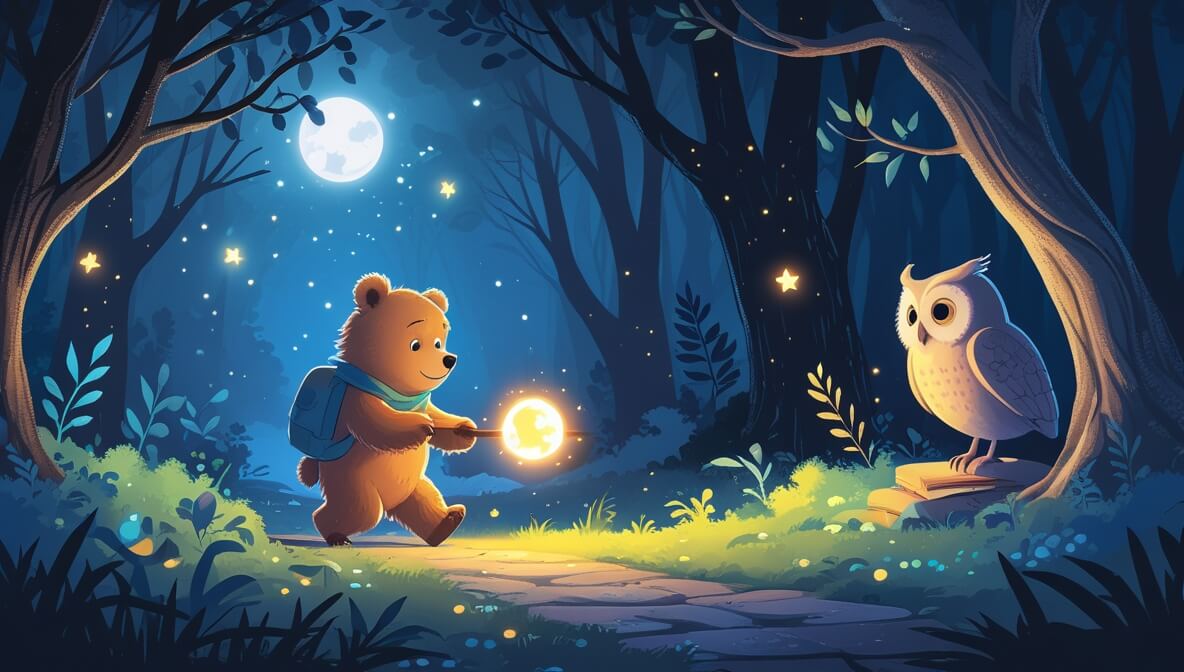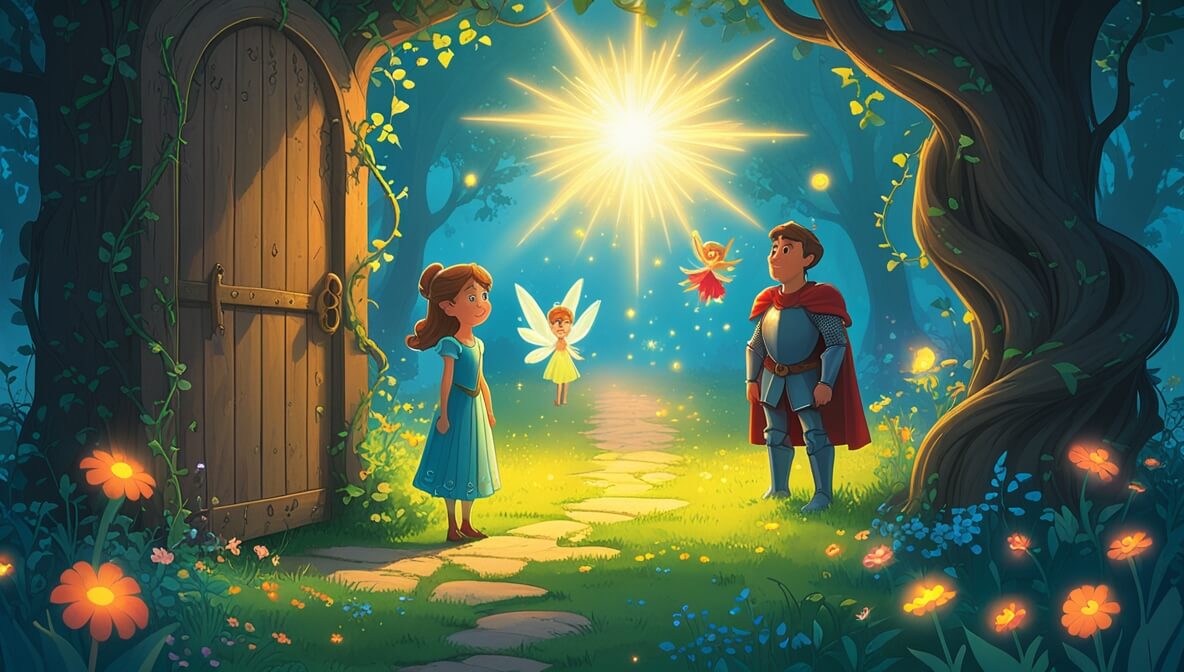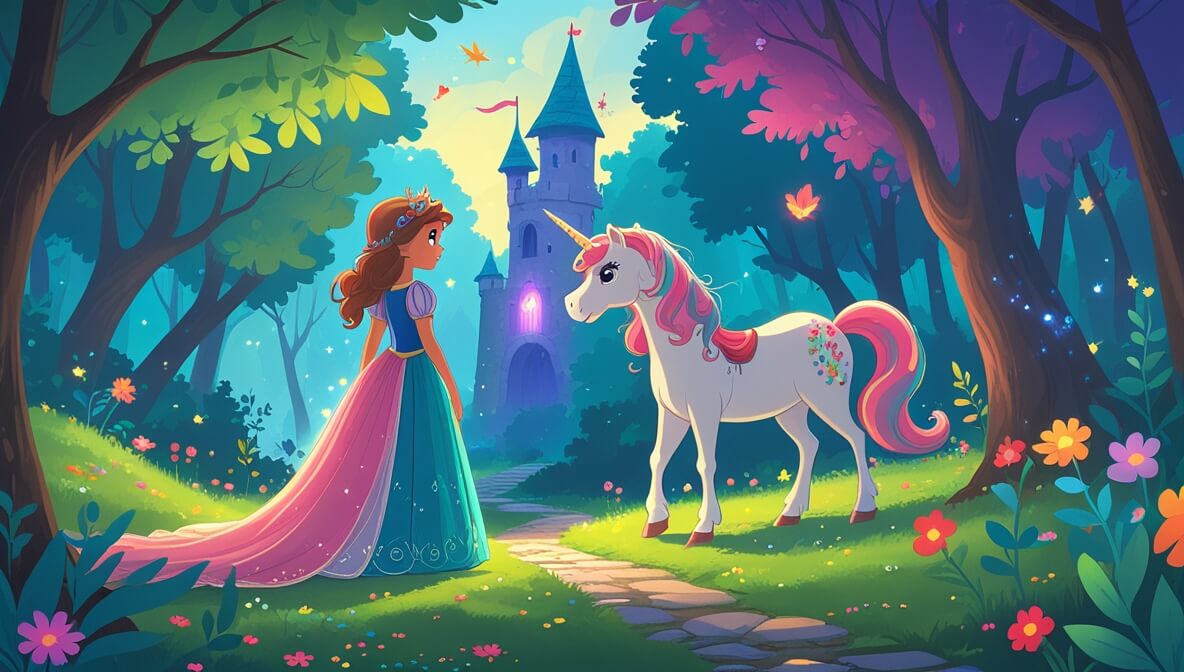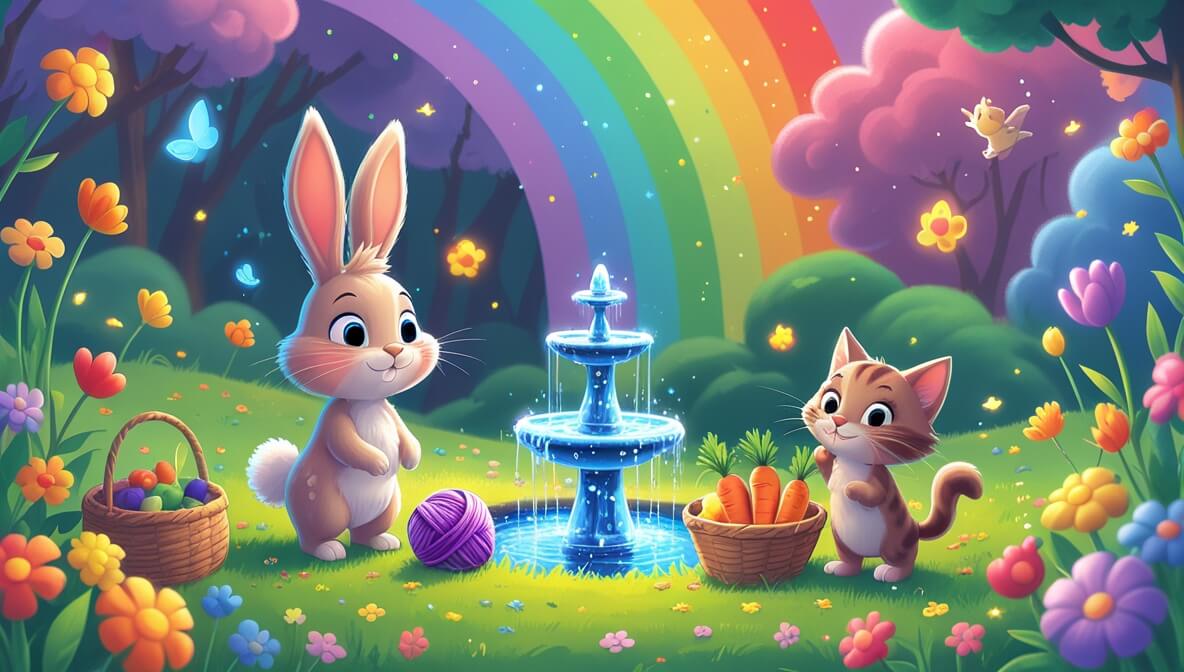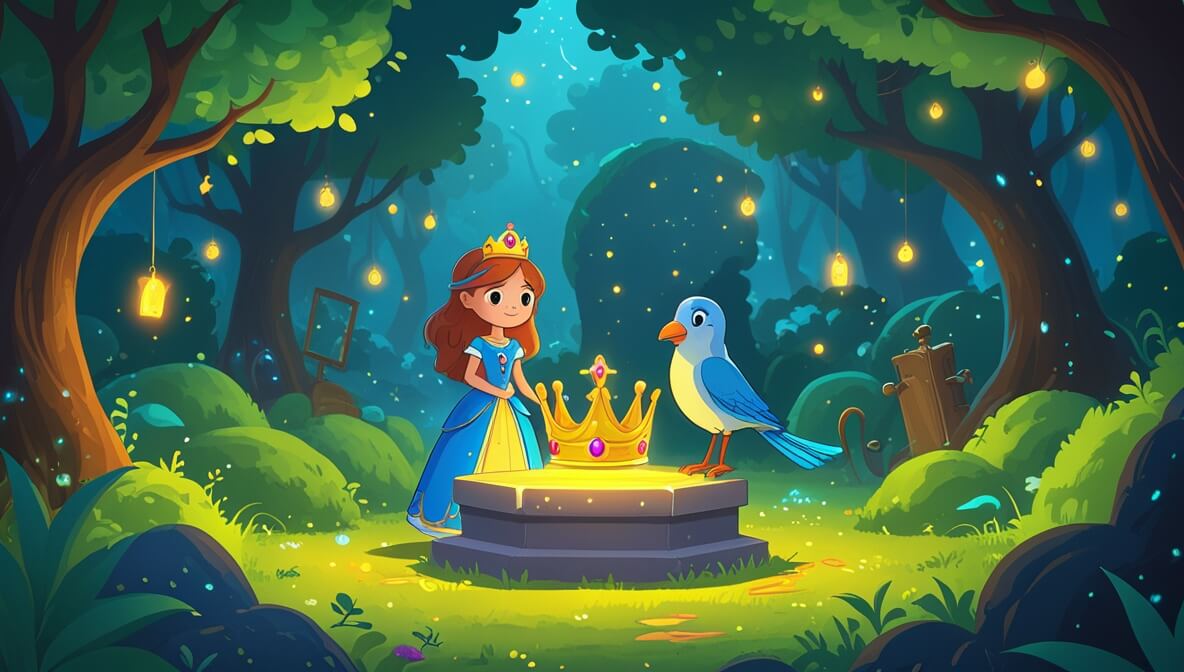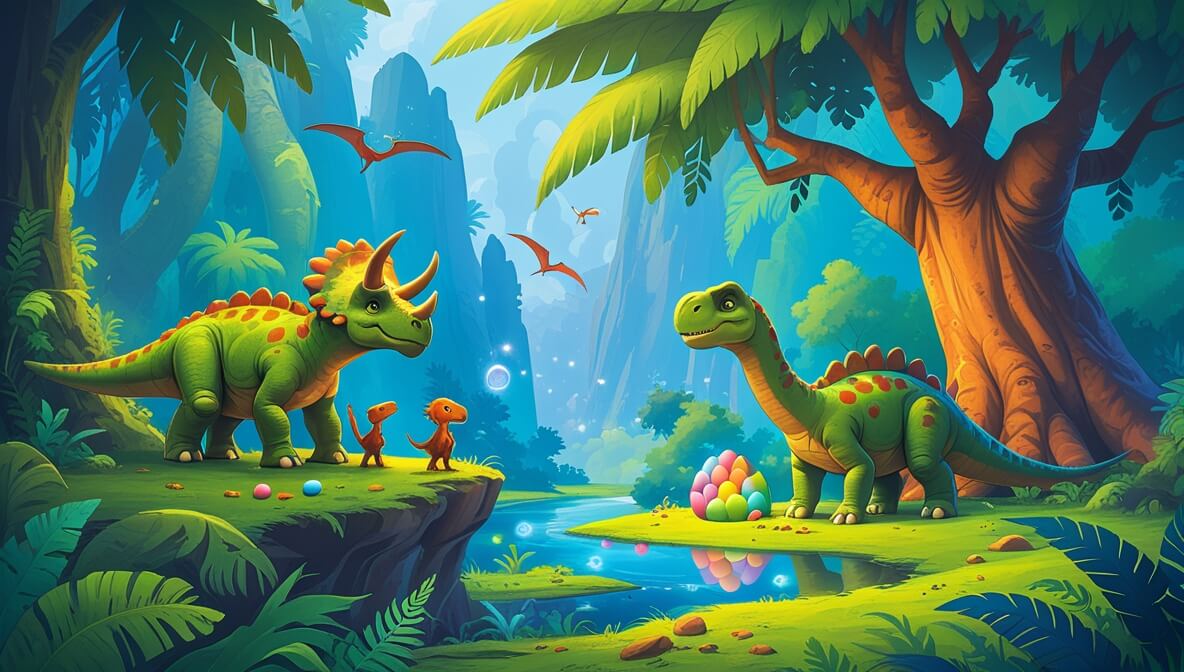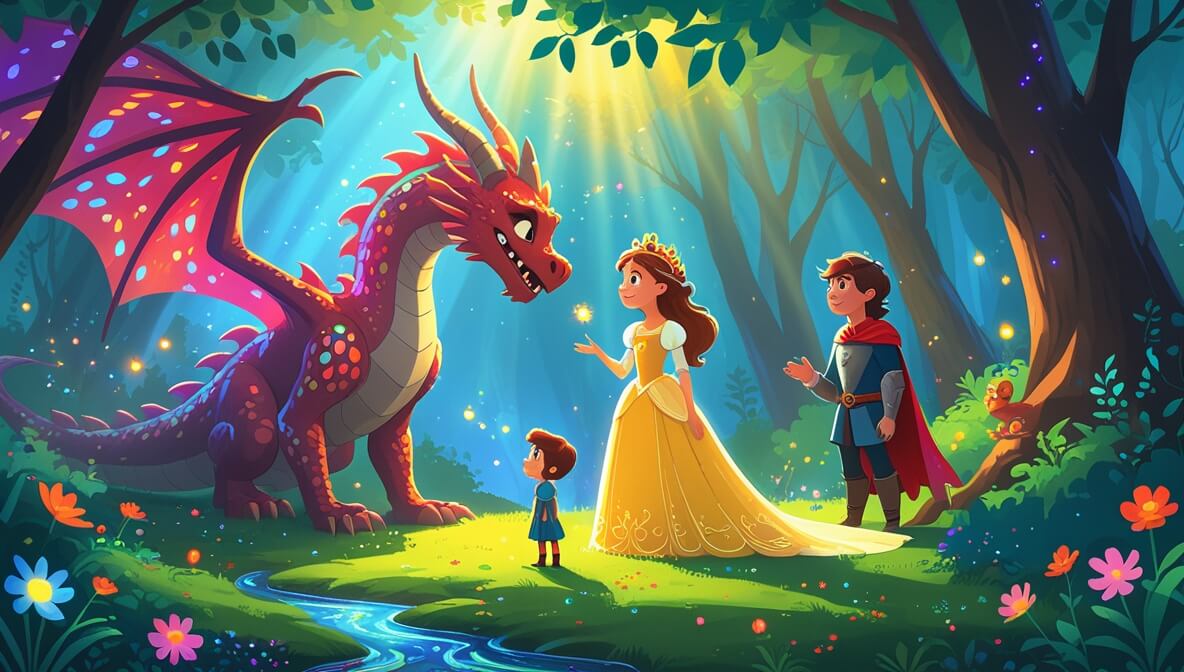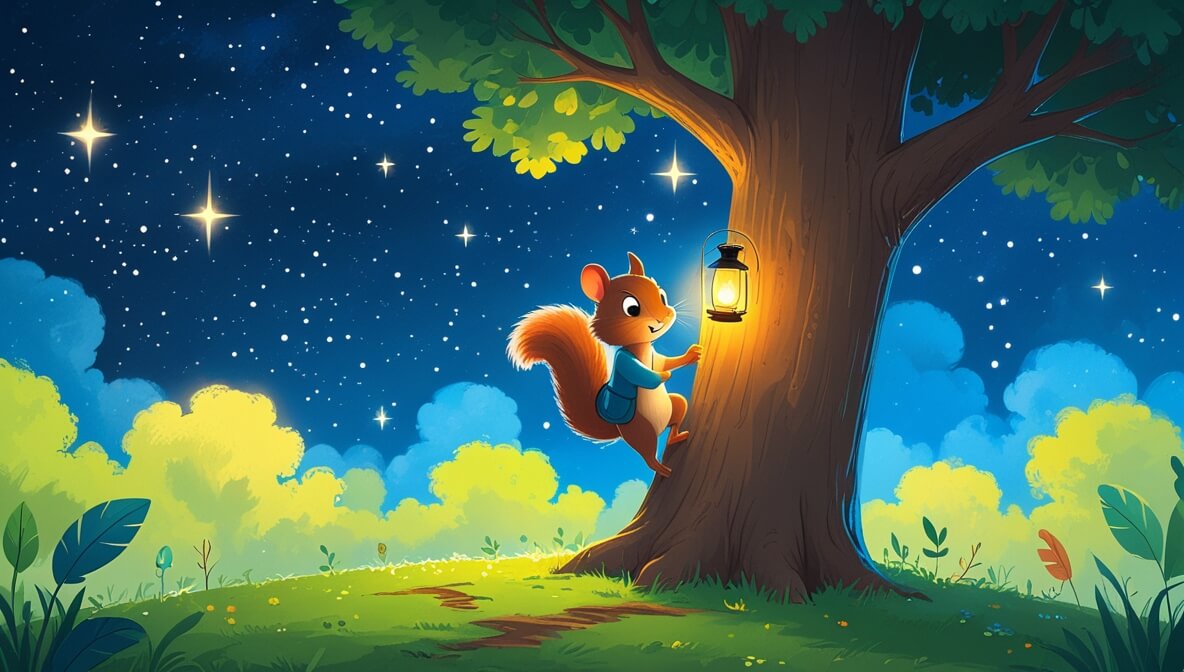In a cozy forest, a little bear named Tumble finds a magical piece of moonlight. With the help of his new friend, a wise owl named Hoot, they discover the secret of the glowing light.
Age Recommendation
0 – 4 years
Characters
Characters:
- Tumble (a curious young bear)
- Hoot (a wise and friendly owl)
Story
Tumble the bear was wandering through the forest one evening when he noticed something shimmering on the ground. It was a small piece of moonlight, glowing softly among the leaves. Tumble was fascinated and wanted to know more about it.
The Moonlight Discovery
As Tumble stared at the moonlight, he heard a gentle voice. “Hello, little bear,” said Hoot, the owl. “That is a piece of the moon’s magic. It helps the forest shine at night.”
The Owl’s Wisdom
Hoot perched down beside Tumble and explained, “The moonlight makes the stars twinkle and keeps the forest safe while everyone sleeps.” Tumble listened closely, his eyes wide with wonder.
Sharing the Light
Tumble wanted to share the moonlight with his family. Hoot agreed, saying, “Let’s bring the magic to your home. It will make your dreams sweet and bright.” Together, they carefully carried the glowing piece back to Tumble’s den.
Dreaming Under the Moon
That night, Tumble snuggled with his family, the moonlight casting a gentle glow around them. As he drifted off to sleep, he felt the warmth of Hoot’s wisdom and the magic of the moonlight keeping him safe.
The end.
Moral of the Story
Sharing special things with loved ones brings happiness and comfort. Just like Tumble shared the moonlight, sharing our joy can light up the hearts of others around us.
Questions to Think About
- What would you do if you found a piece of moonlight?
- Why do you think Tumble wanted to share the moonlight?
- How do you feel when someone shares something special with you?
- What makes the forest a magical place at night?
- How did Hoot help Tumble understand the moonlight?
Do You Know
- Owls have special feathers that help them fly silently through the night.
- The moon’s light actually comes from the sun reflecting off its surface!
Word Explorer
- Shimmering: Sparkling or shining softly
- Fascinated: Being very interested or amazed
- Perched: Sitting or resting, like a bird on a branch
Emotions in the Story
- Curiosity: Tumble felt this when he discovered the moonlight.
- Wonder: He felt wonder when he learned about the moonlight’s magic from Hoot.
- Comfort: Tumble felt comfort when he shared the moonlight with his family.
Color Your Scene
Imagine Tumble and Hoot carrying the glowing moonlight through the forest. Draw Tumble’s fluffy fur and Hoot’s soft feathers under the moon’s light. Use gentle colors like soft blue and silver to show the moonlight’s glow.
Parents’ Corner
This story is a wonderful way to discuss the joy of sharing and the magic of imagination with your child. You can talk about:
Sharing: Discuss times when sharing something special with someone else made both of you happy.
Imagination: Encourage your child to imagine other magical things they might find in the forest at night.
Comfort and Safety: Talk about how certain things, like a favorite toy or a nightlight, help us feel safe and cozy at bedtime.

